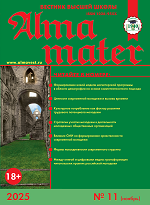https://doi.org/10.20339/AM.2-18.088
B.N. Zemtsov is Dr.Sci (History), head of sub-faculty at MSTU n.a. N.E. Bauman e-mail: zemtsovbn@maul.ru
Examined are problems of humanitarian environment in non-humanitarian universities. The author believes, that it’s narrowing was unforeseen result of entry of national educational system into the Bologna process. Trying to raise the professional level of graduates bachelors, departments of non-humanitarian universities minimize auditory lessons of non-profile departments. Involuntarily blocking educational work of humanitarian departments, colleagues non-humanitarians create prerequisites for emergence of dangerous tendencies in consciousness of youth. And shortening of volume of classroom hours and number of humanitarian disciplines takes place under conditions of war of nerves, that is conducted by the West against Russia.
Key words: Bologna process, humanitarian subject disciplines, ideology.
References
1. Pokholkov, Yu.P., Agranovich, B.L. Basic principles of national doctrine of engineering education. In: New educational technologies in the strategy of spiritual development of society. Novosibirsk, 2000, pp. 34–45.
2. Dragina, O. Humanization of technical education. URL: //http://podmoskovye.bezformata.ru/listnews/gumanitarizatciya-tehnicheskog... (Date of the address: 26.02.2017).
3. Three quarters of graduates of Russian higher education institutions want to work abroad. URL: https://russian.rt.com/inotv/2014-08-25/Tri-chetverti-vipusknikov-rossij...
4. Where young Germans want to work. URL: http: //www.dw.com
5. Nikolaeva, O., Gromova, A. Operational report on the course of war of nerves — documents of CIA. URL: https://regnum.ru/news/2231189.html
6. Avetisyants, G.G., Borisov, V.I. Informational confrontation and information war. What is it? Academy of social management. 2015, no. 1, pp. 2259–2272.











.png)






